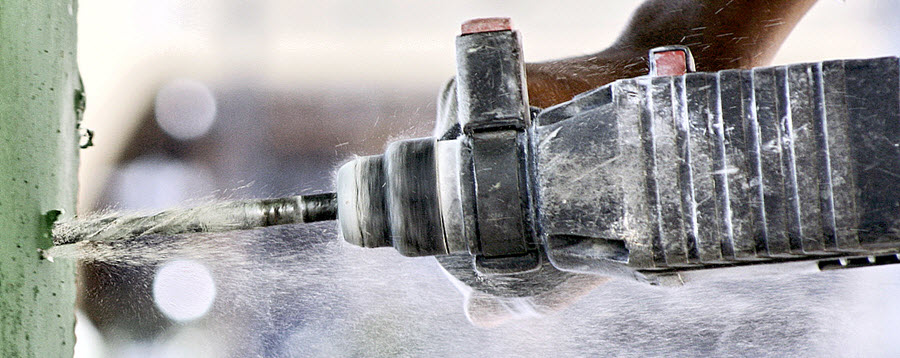
NIOSH: How to Reduce Hazards of Concrete Drilling

Concrete drilling is often dusty, loud and physically exhausting. It also can expose workers to lung-damaging silica dust as well as hand vibration and noise levels well above recommended limits. Now, two NIOSH-funded studies have identified ways to reduce these hazards.
When testing electric and pneumatic drills drilling concrete without a vacuum or water to reduce dust levels, investigators at The Center for Construction Research and Training and the University of California at Berkeley found similar productivity between the drills, but much higher vibration, dust, and noise levels with the pneumatic than the electric drill.
Vibration and Dust Hazards
Specifically, vibration levels were more than 5 times greater with the pneumatic than the electric drill. In terms of silica dust, the pneumatic drill generated 40 times more dust than the electric drill – 444 times the OSHA permissible exposure level (PEL). The electric drill was much lower, but still generated 11 times the OSHA PEL. The pneumatic drill’s noise level was also greater than the electric drill. To reduce these exposures and help workers safely drill concrete for longer periods per day, the authors recommend employers consider electric instead of pneumatic drills.
Using a robotic system to evaluate concrete drilling with bits worn to different degrees, a second study found that sharp, carbide-tipped bits produced less dust, noise and hand vibration than dull bits when drilling into concrete. As expected, the use of a dull bit can increase the time to drill a hole by up to 60%. A dull bit also can increase noise by almost two decibels, generate about twice as much silica dust and produce a small increase in handle vibration. And because worn bits increase time required to drill a hole, they also increase exposures to these hazards.

